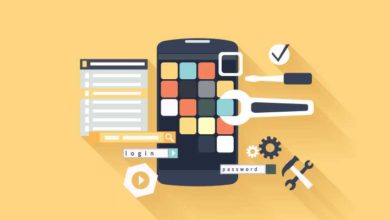
We created this guide to help you understand the mobile app development solutions and processes before creating an app.
The development of mobile applications has been on the rise for years. This subcategory of software development specifically refers to applications designed for mobile devices.
Which are the best platforms for developing mobile apps?
Depending on your skills, goal, app type, and budget, you’ll need to narrow down your options for app development. You can not only develop an app with the following tools, but you can also test, optimize, debug, and maintain your app after it is launched.
In the current market, these are the top platforms for app development:
BuildFire
No-code app building software for iOS and Android has never been easier. The BuildFire feature marketplace allows users to add functionality without technical knowledge or coding experience. Building an app from scratch is an excellent option for startups and established companies alike. Installing plugins from the featured marketplace makes it easy to add functionality.
In summary, BuildFire is the best mobile app development solution on the market regardless of the type of app you want, the size of your business, the skill level of your team, or your budget.
Flutter
Unlike other options on the market, Flutter allows you to create cross-platform apps directly from one codebase. It was introduced by Google in 2017, so it is a relatively new concept.
With Flutter, you can build desktop apps and web apps using a single codebase written in C, C++, and Dart for iOS, Android, Linux, macOS, Windows, and more.
Xamarin by Microsoft
A cross-platform UI framework using C# and .NET, Xamarin allows you to create apps for Android, iOS, and Windows.
With this platform, users can create apps that look and feel similar across multiple platforms and devices, making them popular. Xamarin has a variety of developer toolkits for Windows and Mac, which integrate with native APIs, backend services, and more. Applications will feel as if they were deployed natively. With this platform, users can create apps that look and feel similar across multiple platforms and devices, making them popular. Xamarin has a variety of developer toolkits for Windows and Mac, which integrate with native APIs, backend services, and more. Applications will feel as if they were deployed natively.
PhoneGap by Adobe
Unlike the other options, Adobe PhoneGap lets you create apps using JavaScript, HTML5, or CSS3, and it even has a plugin platform for adding features.
Furthermore, PhoneGap is an Apache Cordova distribution, so these terms are often used together. Since Apache Cordova powers PhoneGap, the terms may be used interchangeably.
An overview of the different types of mobile applications
In the past, app development was only possible using low-level coding. Today, app development is very different. It was necessary to code two separate versions from scratch if you wanted to have an iOS app for the Apple App Store and an Android app for the Google Play Store.
Today, app development tools, languages, and platforms are more integrated, and Javascript is used for cross-platform code generation.
Entrepreneurs, existing businesses, and e-commerce companies can now develop native apps much more easily. We will briefly explain each type of app and how they differ in terms of development:
Application development for native mobile platforms
A native app is a mobile application that is installed directly on the device. Native apps typically can be downloaded via the App Store or Google Play Store. Many native apps are capable of working without an internet connection, and they take advantage of the existing features of the device on which they are installed. Native apps require writing code that is specifically designed for the device’s operating system.
Apps that run natively on multiple platforms
As long as the same code is used for all platforms, you only need to write one line of code once.
Cross-platform native apps are more affordable and take less time to develop from a development perspective, so they are most beneficial from a user perspective.
Apps that combine mobile and desktop technologies
The main difference between cross-platform and hybrid apps is that cross-platform apps can be written once and work on both platforms simultaneously. Hybrid apps can be written once and can work on both platforms simultaneously as well.
Despite hybrid app development being more user-friendly than cross-platform app development, cross-platform app development remains highly technical and requires app development skills. While hybrid development is less complex than cross-platform development, it still requires basic web development knowledge and no-code app builders. Cross-platform app development, on the other hand, remains a highly technical process that requires app development skills even though hybrid development is more user-friendly. A hybrid app requires knowledge of web development or no-code app builders, unlike a cross-platform app.
PWAs (Progressive Web Applications)
The PWAs are not natively installed on users’ devices but are delivered via the web. The PWAs can even be pushed through the web browser in today’s world. Push notifications can even be sent. However, by using native features on their devices, PWAs will not be able to accomplish as much as native apps.
In summary
App development comes in all shapes and sizes. The best path for you depends on your budget, your goals, your timeline, your technical skills, and how complicated your app is.
In terms of functionality, BuildFire is an excellent option to consider, since it has a no-code DIY option that entrepreneurs will appreciate. It also offers full-service app development, which includes post-launch maintenance and support.
Contact the best app development company for a free consultation







